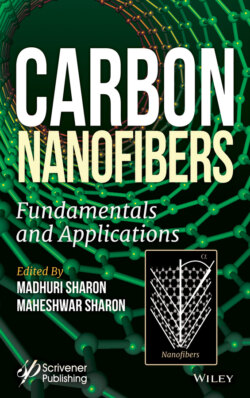Читать книгу Carbon Nanofibers - Группа авторов - Страница 30
1.3.3 Use of Catalyst in the Synthesis of CNF
ОглавлениеThere are variations in the type of catalyst used for the synthesis of CNF. There are some catalysts which are solid like ferrocene, cobaltocene, etc. These catalysts vaporize in the temperature range of 300 to 400 °C. Such catalysts are kept in a boat (Figure 1.8B1) in the furnace (Figure 1.8A1) along with the precursor like oil. The vapor of oil and the vapor of catalyst like ferrocene are carried with carrier gas to the furnace (Figure 1.8A2). Catalyst decomposes into its metal oxide and in-situ reaction takes place with the vapor of oil to produce CNF. These CNFs are collected in the boat (Figure 1.8B2).
Catalyst can be used either in the form of powder or as a thin film deposited on a substrate like quartz glass, alumina plate, or as a metal plate like nickel, iron metal, etc. Normally, after scratching a metal plate with diamond powder it is cleaned with water and dried with acetone, which is also used as a catalyst. Scratching the plate creates more roughness of the metal, which produces more surface states and surface area over which the reaction of vapor of precursor reacts more favorably with catalyst. The preferred size of catalyst particles should be in the range of 5–25 nm in diameter. Some examples of the role of different types of catalysts and their effect on the carbon nanomaterials produced are shown in Figure 1.4.
There is no hard and fast rule to suggest which type of catalyst will produce better CNF. Better CNF means the value of its diameter, length, surface area and surface states. Selection of catalyst and its type depends upon the type of precursor and size of catalyst powder, which can only be decided by carrying out some specific experiments. Powder or thin films of Fe/Ni, Ni, Co, Mn, Cu, V, Cr, Mo, Pd, MgO, and Al2O3 are used as catalyst. But most popular catalysts are powder or thin film of organometallic compounds of iron or nickel or cobalt. Details of the use of different catalysts are presented in Chapter 3 of this book.
